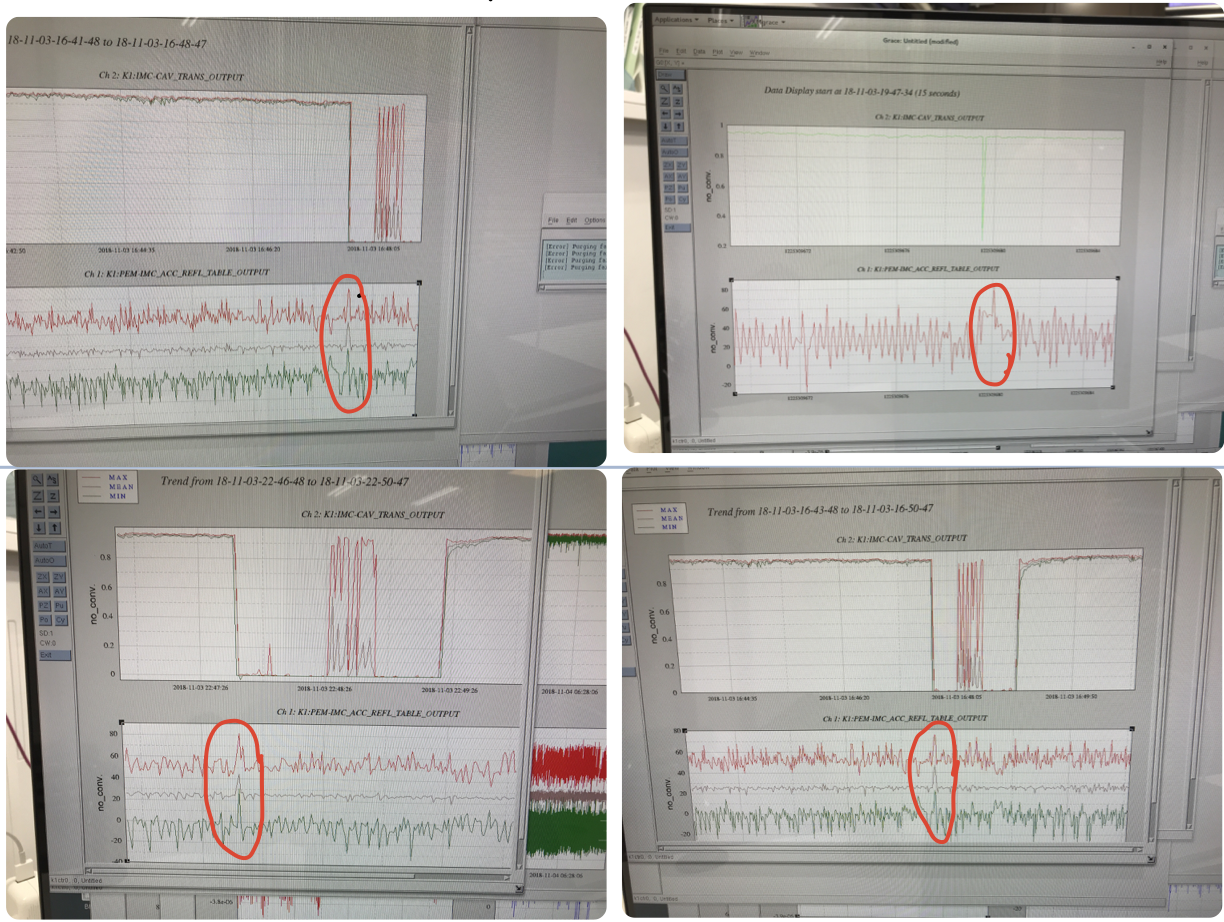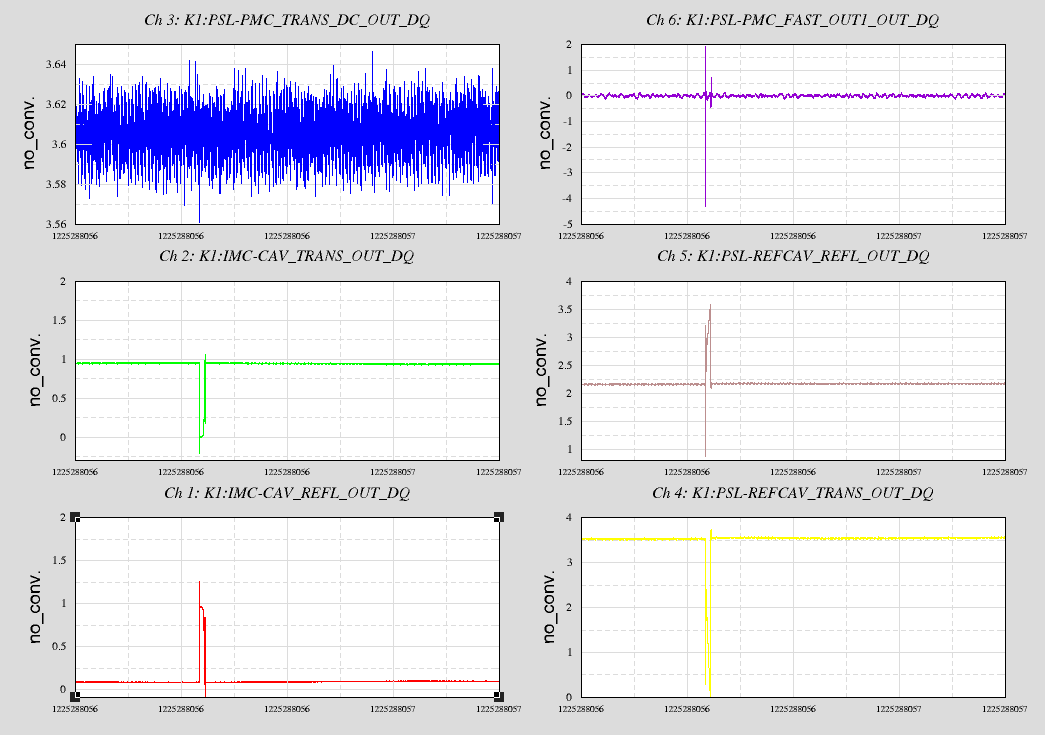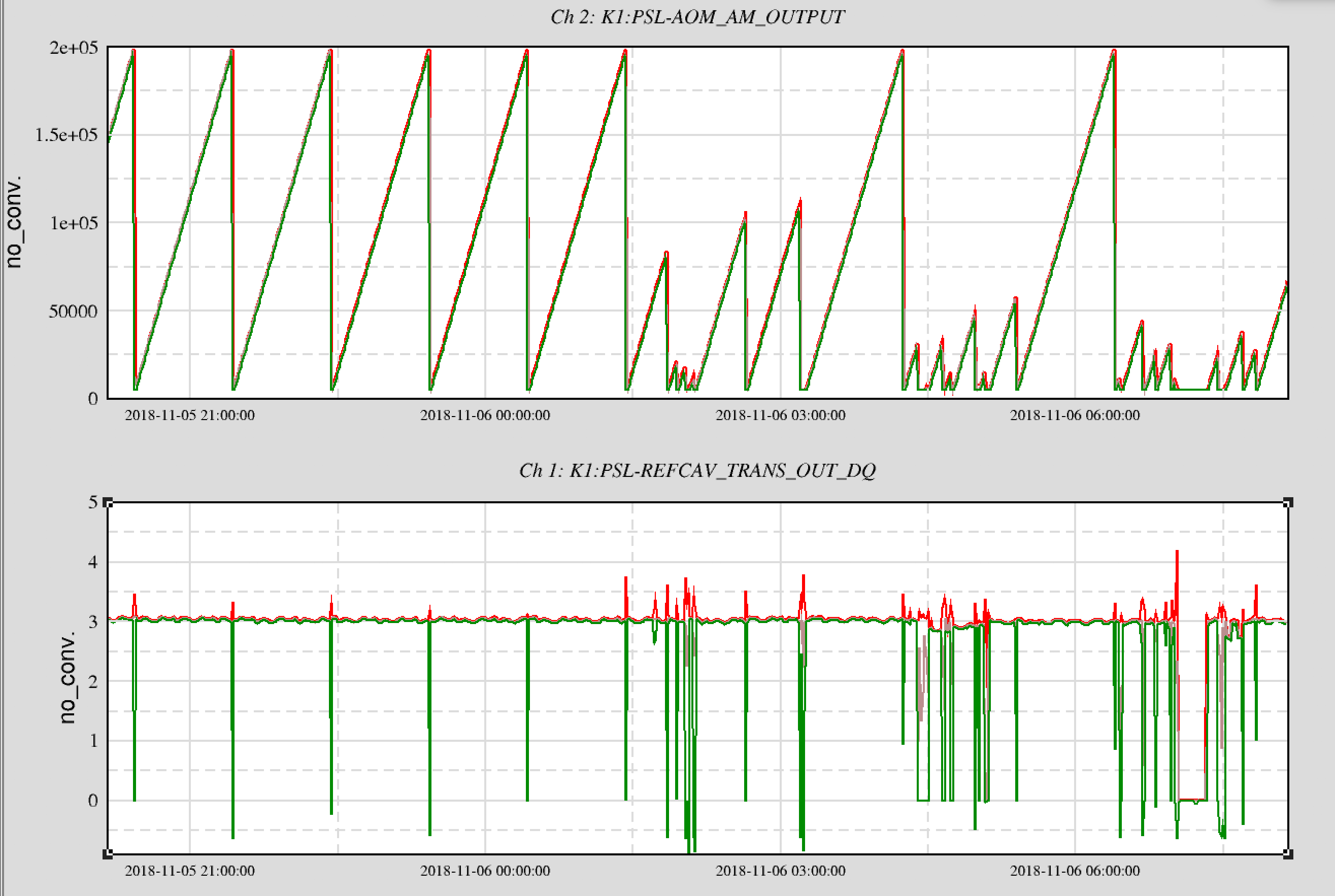The IMC lost lock every couple of hours. To improve it, I tried to find the monitor channel which got saturated or the PEM channel which shows the external disturbance. And I found that the accelerometer have pulse disturbance when the IMC lost lock. The details of the investigation are described below.
1. Lock loss type
From the transmitted power signal at the lock loss, the lock loss happens in the very short term. Fig. 1 shows the plot of the IMC-TRANS. That means the lock loss does not happen because of "the slow drift', such as drift of the suspensions or the DC offset drift at error point.
Fig1. IMC TRANS
2. Coherence with the PEM monitor signal
Then I looked into the PEM signal, such as the accelerometer, the microphone at the PSL and the IMC REFL table. Then I found that the accelerometer signal has the pulse when the IMC lost locked. I checked several lock-loss events at random, and the accelerometer signals at all of the events show such kind of pulse disturbance. Fig. 2 shows the accelerometer signal and the IMC TRANS for four lock-loss events. Unfortunately, since the DAQ channel for the accelerometer does not work at all, I could not find which the lock-loss or the pulse-like disturbance happens first.
Also, I checked the accelerometer signal located on the periscopes on the PSL and the IFI REFL table. The accelerometer signals on the PSL periscope for the FSS and the IFI REFL table show the same disturbance, but surprisingly the one on the periscope at the PSL output does not show such signal. Fig.3 shows each accelerometer signals.
Fig.2 IMC TRANS and the accelerometer signal on the IMC REFL
FIg.3 IMC TRANS and the accelerometer signals.
Plan for tomorrow
I will inject the impulse signal on the IMC REFL table and check if the IMC lost lock. And if it is the reason for the lock-loss, we need to identify what causes this kind of disturbance.












